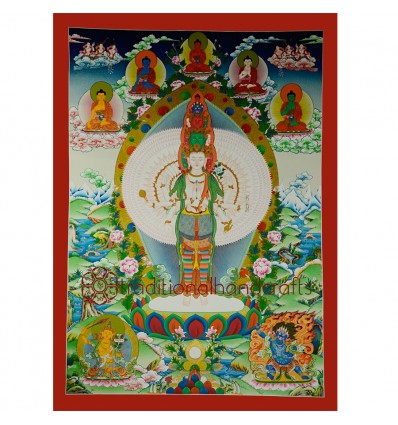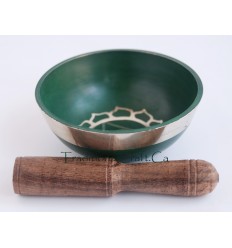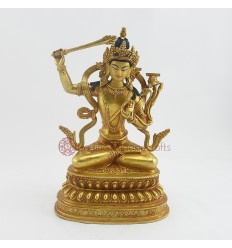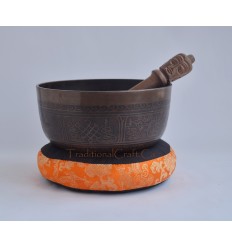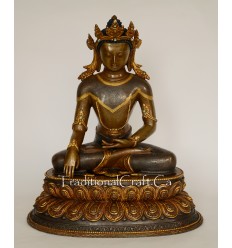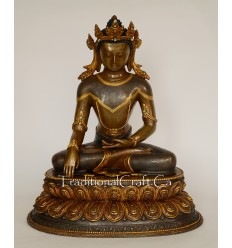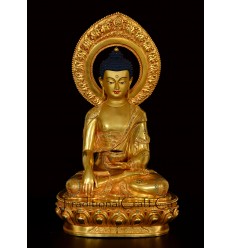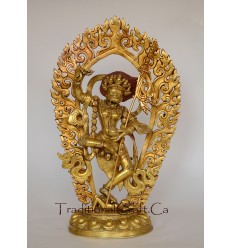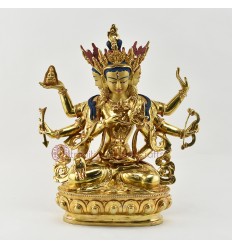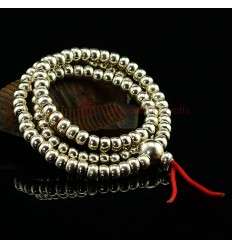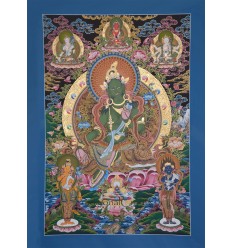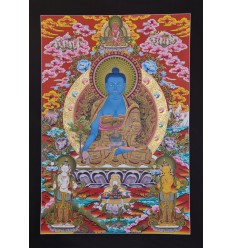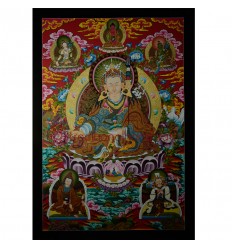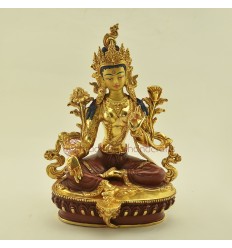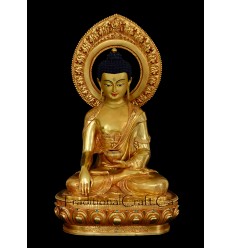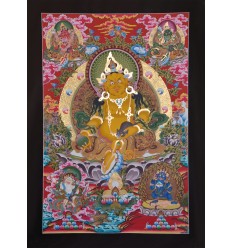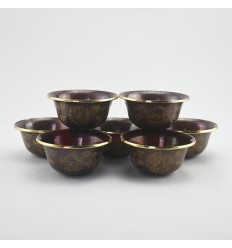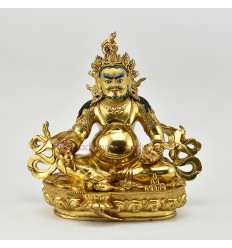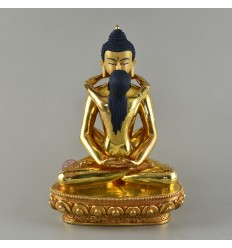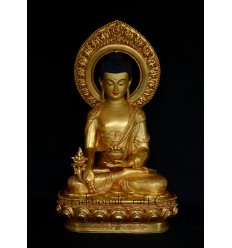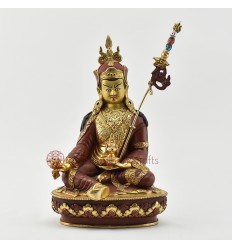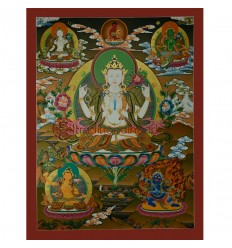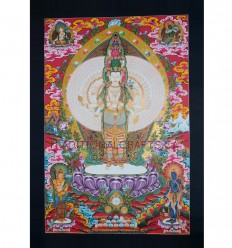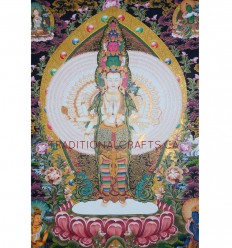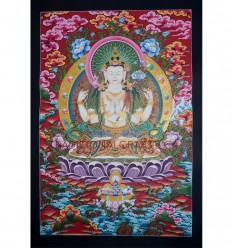No products
Product successfully added to your shopping cart
There are 0 items in your cart. There is 1 item in your cart.
39"x28" Avalokiteshvara Thankga Painting
761768095034
New
39"x28" Avalokiteshvara Tibetan Thankga Painting From Nepal
1 Item
Warning: Last items in stock!
|
Name |
Avalokiteshvara Thankga Painting |
|
Size with Border |
39" Long x 28" Wide |
|
Size without Border |
36" Long x 25" Wide |
|
Material |
Original Hand-Painted Cotton Canvas with 24 Karat Gold Detailing |
|
Style |
Tibetan |
|
Weight |
0.3 kg / 0.66 lbs. |
|
Ships From |
Bhaktapur, Nepal |
|
Shipping Provider |
Express |
|
Shipping Time |
Usually ships within 48 hours. Allow 3-5 business days for delivery worldwide. |
|
Insurance |
Insurance is included in the shipping cost. |
1000 Armed Avalokiteshvara – Bodhisattva of Boundless Compassion
Avalokiteshvara (Guan Yin in Chinese; Chenrezig in Tibetan; Kannon in Japanese) is the Bodhisattva of Compassion. Among the Bodhisattvas, it is Avalokiteshvara who has the largest number of forms and is perhaps the most venerated and most popular Buddhist deity. His sex, originally masculine, is sometimes considered feminine in China and Japan, although this discrimination is unsupported by any canonical text and was often considered in China and Japan as the 'mother of the human race' and, in this respect, worshipped in the form of a woman.
Among the 108 forms of Lokiteshvara, Avalokiteshvara is one who refuses to accept Nirvana since he considers such acceptance selfish in view of the ignorance of the great majority of the people who have not yet attained that stage. His sacrifice symbolizes infinite compassion (Karuna), sharing of mankind's misery, willingness to help those in distress. Avalokiteshvara holds in his hand the indestructible jewel. He is savior and protector from danger. So, his invocation (Mantra) “OM MANI PADME HUM” is found inscribed on rocks, loose stones, prayer wheels, etc.
Avalokiteshvara is known from very early in the development of the Mahayana doctrines and, until Buddhism disappeared from India, enjoyed great favor there. His cult passed from India to South-East Asia and Java, where it met with great success, and also in Nepal, Tibet (where he arrived with Buddhism and where King Srong - Tsong Gampo, 519-650, was considered to be his incarnation), and in China, from where he went on to Korea and Japan. All these countries imagined him in different forms according to their own temperaments and spirituality.
Gestures and Attributes
It is said that Chenrezig once grew exhausted and discouraged from the overwhemling task of rescuing sentient beings. While struggling to comprehend the needs of so many, his head and body exploded into a thousand pieces. Buddha Amitabha came to Chenrezig's aid and helped prepare the Bodhisattva for his monumental task. Amitabha endowed Chenrezig with eleven heads, with which to hear the cries of the suffering, and also with a thousand arms, with which to aid the suffering multitudes.
Chenrezig's eleven faces are arranged in three tiers, topped by the wrathful face of Vajrapani, and, at the very top, the face of Buddha Amitabha. The skin of a deer is draped over Chenrezig's left shoulder and heart, symbolizing his compassionate nature. His first two principal hands are pressed together at his heart in deference to his teacher, Amitabha; and his other principal hands hold a crystal rosary, a lotus blossom, an undrawn bow and arrow, an eight-spoked Dharma wheel, and a golden water pot. Each of Chenrezig's one thousand hands has an eye in the center of its palm, symbolizing the union of the five method perfections (five fingers) with the sixth perfection of wisdom (eye).
Symbolism
On Chenrezig's left side, at the level of his heart, is the gentle face of a wild deer; the deer's skin is draped over his shoulder. The deerskin is an ancient symbol of renunciation, as wandering mendicants often took the skin of a deer as a meditation seat, and sometimes as a garment and blanket. This symbolic meaning applies, as Chenrezig, a Bodhisattva, has renounced the snares of worldly existence, but here it further symbolizes his boundless compassion for sentient beings. According to legend, Chenrezig once took rebirth as a wild deer, but he had such heartfelt compassion for the hunter who chased him that he willingly laid down his life.
No customer comments for the moment.


